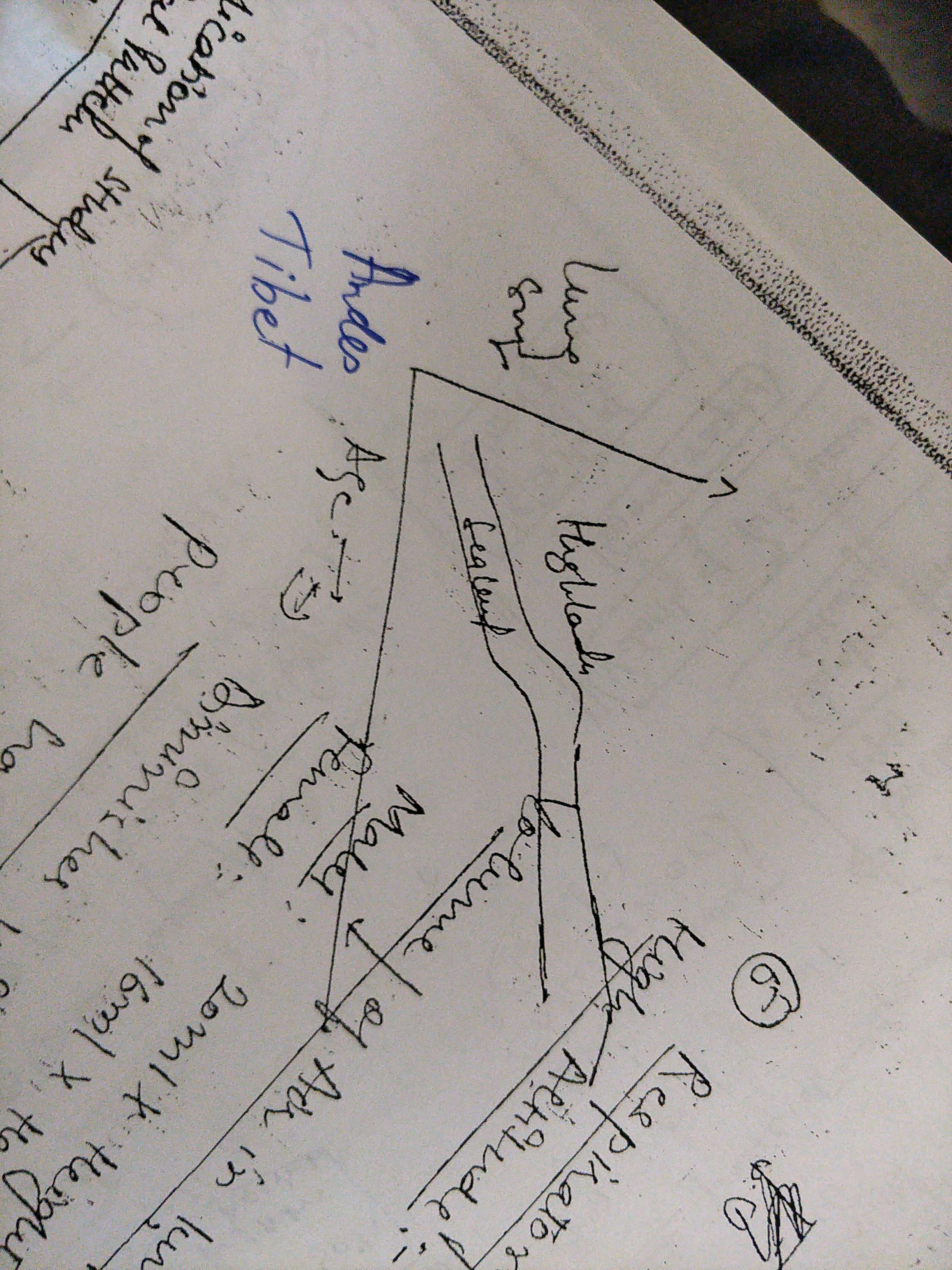Genetic markers
Genetic markers
genetic marker is a gene or DNA sequence with a known location on a chromosome. Since we cannot see the DNA various indicators are used to identify the markers.
- HB level. hemoglobin is protein molecule in red blood cells that carries oxygen from lungs to the body tissues and returns carbon dioxide back to lungs it has iron and fore protein chains.
- Maximum limit 34 gm/dl because it is the metabolic limit of red blood cells. Where is between gender population nutrition environment.
- Indian males have 12 females 10 Talwar 1989. Canadian meals 15 females 13.5 owen 1977. American meals and females 13.8 similar.
- Menstruation decreases red blood cells.
- Anaemia in in Andaman is 30%. Pande anaemia in around tribals 60%.
- Sickle cell populations have lower.
- Arab have high due to iron rich dry fruits diet.
- Gradual increase upto the age of 30 and declines in old age. embryonic hemoglobin is present by the third month after which fetal hemoglobin is present. But after birth it is replaced by adult hemoglobin by the age of 2 years.
- Hemoglobin A. 98%
- Hb S. Sickle cell anaemia. frequent in tropical Africa 10 to 40% population. India 5% to 30% in various groups. Mediterranean Greece Algeria.
- HbE. south east asia Indonesia Thailand Vietnam. Also in Sri Lanka and common in Assam Meghalaya. According to living stone associated with malaria
- HbC. Anomaly in the beta chain. Heterozygotes are a symptomatic But homozygous may develop joint pain, jaundice, pneumonia. Frequent in West Africa. Associated with malaria.
- Blood pressure. heart pumps blood into blood vessels and the pressure at which blood leaves the heart is called systolic blood pressure SBP. It denotes contractility of heart. Pressure at which blood enters the heart is called diastolic blood pressure DBP. Indicating relaxation of heart. Sdp/dbp is 120/80 or 115/70 is Normal.
- It varies due to sex heredity age body composition and social status. Reddy 1991 Nirmala 1992 shrivtastav 1977.
- Neonatal 70 by 50. In a few months it reaches 9560. Adolescents have 115 and 70. 16% variation due to environment 48% due to genetics and 36% due to dominance.
- In rural areas hypertension about 3% India and urban areas 5%.
- Body fat.
- subcutaneous fat is uniquely distributed over the body and both genetics and environment play a role. Subcutaneous fat is less in heat and more in cold areas in habitants because it conserves heat.
- The presence of cells determines where the fat will be more. Some people have more belly fat others have more distribution.
- Minimum rectal temperature is dependent upon body fat. Daniels and bacon 1961. In American Indian females they had higher rectal temperature than children and males. Hannah 1961
- study of guzman show that genetics determined number of fat cells and also their distribution around the body.
- Nirmala 1993 has studied relationship of blood pressure with fat. Centripetal fat is more active cause of high blood pressure.
- Age related.
- Foetus at 25 weeks of gestation. Fat begins to start and increases until birth.
- From birth till 8 years of age negative velocity due to growth hormones. But Les velocity in females.
- 8 years till puberty. Increase. Male adolescence have reduction in trunk and limb fat but girls increase in trunk fat.
- Body has high saturation in subscapular region. Abdomen. Arms buttock calf and limbs.
- Normal body fat is 10 to 20% in men and 22 30% in women. World Health organisation high income countries have 22 25% body fat and low income countries have less than 5%.
- pattern of distribution is more important than total fat in blood pressure. Upper fat more related to hypertension than lower body fat. Frankfurt more chances of heart disease than extremities fat.
- World health organisation. Rising obesity in developed countries. Malnutrition also creating obesity in developing Nations soft drinks fast food.
- Sensory variation
- Colour blindness. Red and green colour blindness
- X linked trait. Used as genetic marker in human variations. Togan 1987.
- Studied by Naidu, Rao and reddy in India.
- Turkey togan study. Nigeria by Scott.
- Overall colour blindness 7 to 10% in males 1% below in females. Caucasoid 8% mails. 0.6% females. Asian 5% mail 0.25% female. Africans 4% mail 0.16 percent female.
- Taste - phenyl thiocarbamide
- Autosomal polymorphic trait
- Non tasters have tt while tasters have TT
- Female in balkans Nigeria and Burma more sensitive to the taste. But not in Muslims in India.
- Respiratory function.
- volume of air in lungs is vital capacity. High altitude have low oxygen which means increase red blood cells like Andes and Tibet
- Male have 20 ml x height centimetre
- Females have 16 ml x ht cm.
